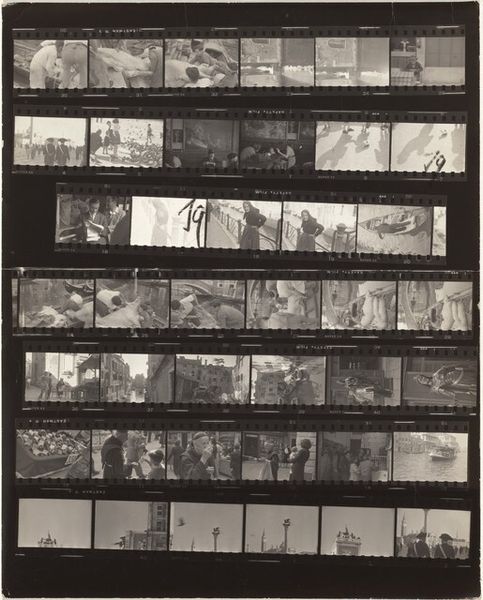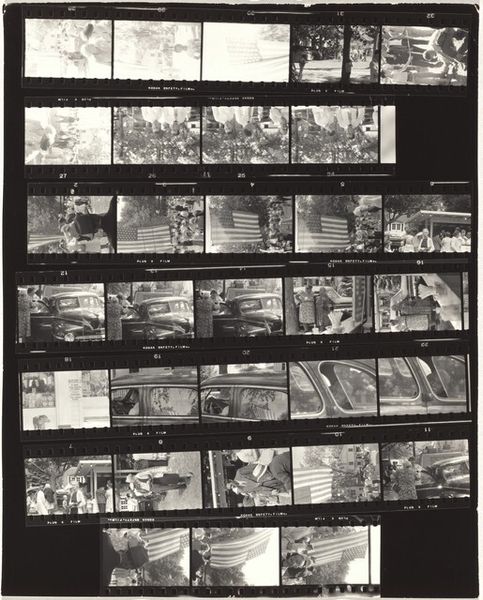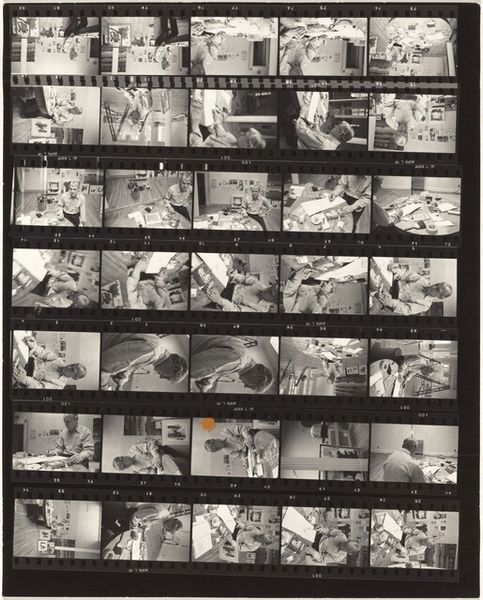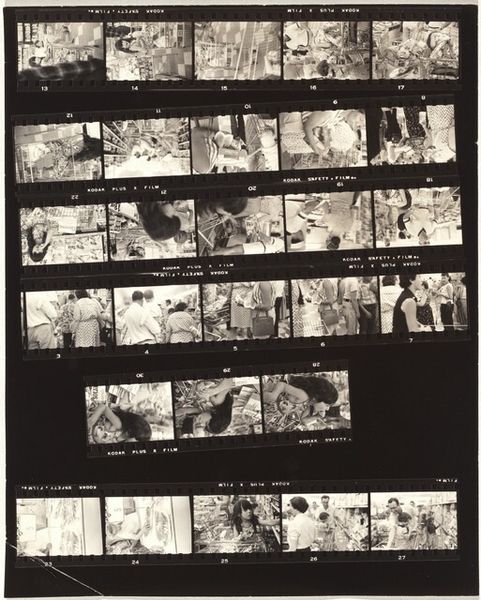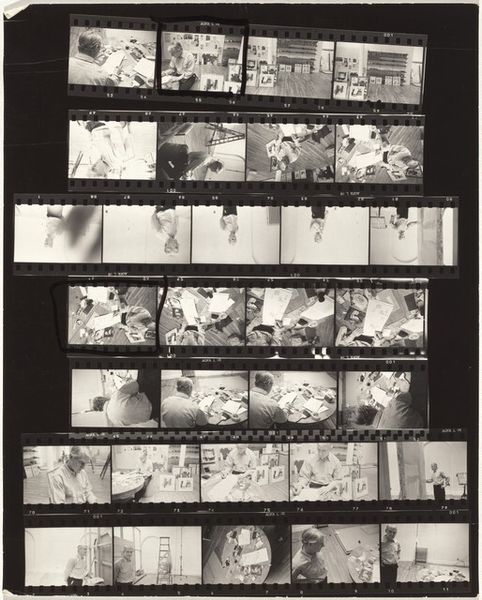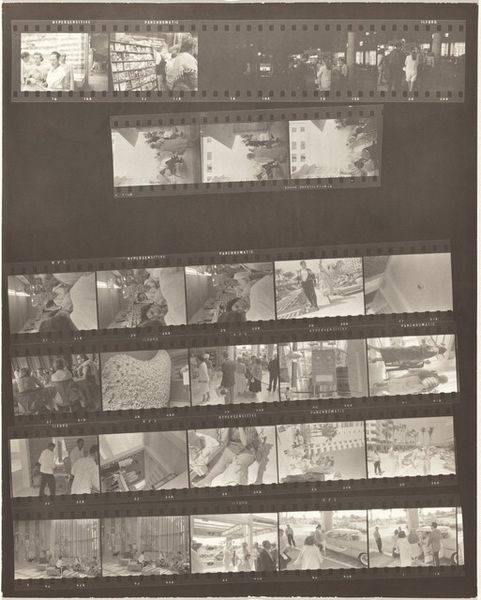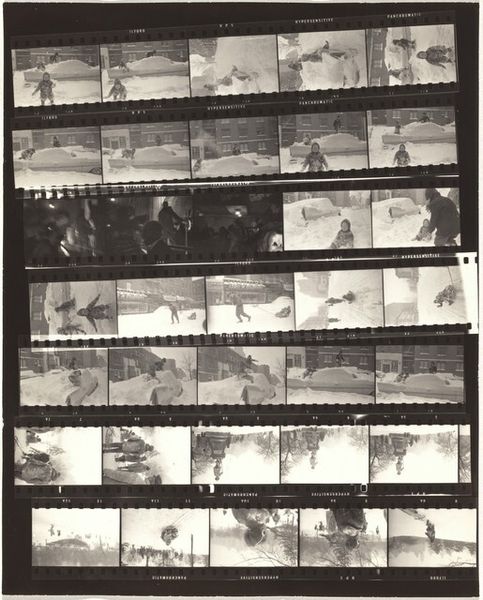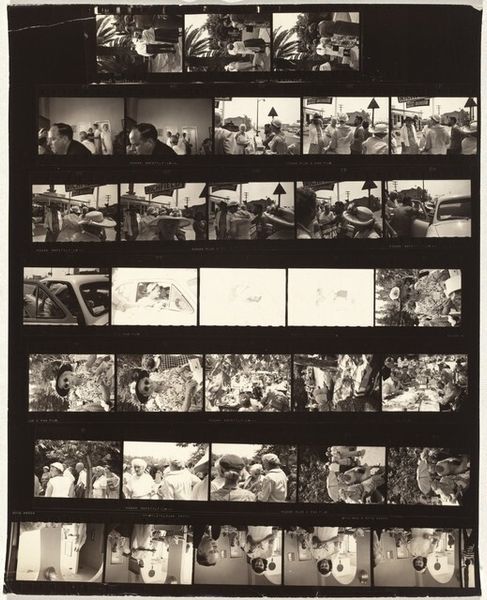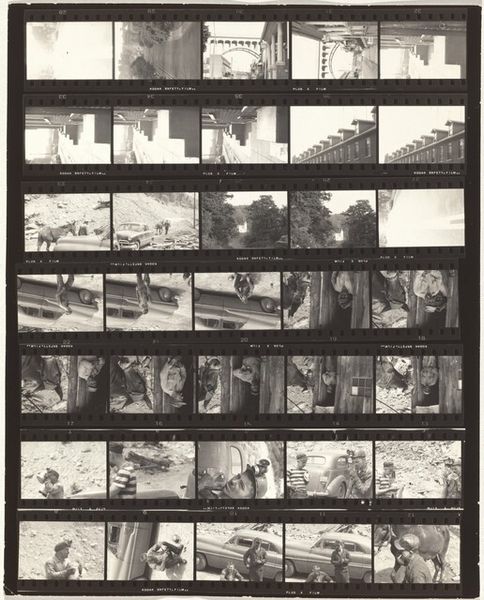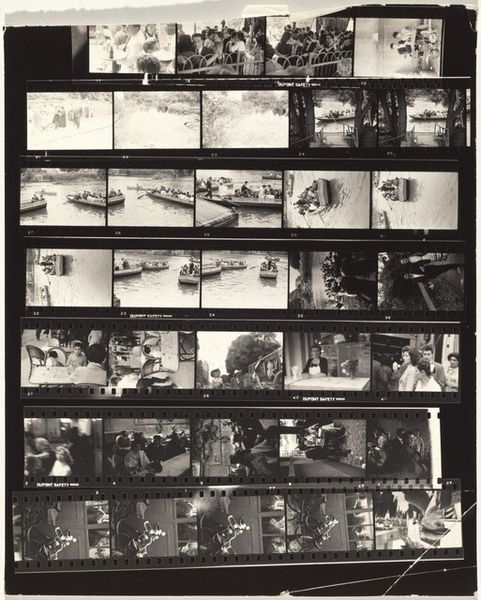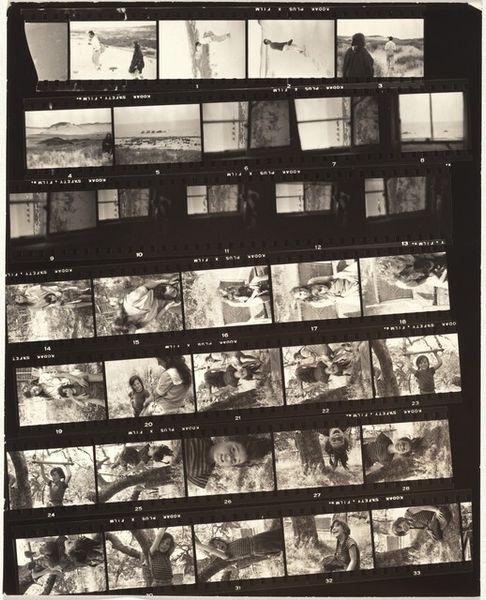
Dimensions: sheet: 25.2 x 20.2 cm (9 15/16 x 7 15/16 in.)
Copyright: National Gallery of Art: CC0 1.0
Curator: Well, here we have "Communion 1" a gelatin-silver print from 1959, by Robert Frank. Looking at the contact sheet, what strikes you most immediately? Editor: The repetition. Row upon row of frames, like a silent filmstrip waiting to be threaded. There’s something melancholic, even claustrophobic, about seeing these glimpses, these fractions of moments. Curator: That feeling ties into the way Frank worked and how he challenged photographic conventions of his time. Often associated with the Beat Generation, he photographed America as he saw it, rather than as it wanted to be seen. He used high contrast and unconventional compositions to highlight the raw edges of society. Editor: The inverted images especially draw my eye. They throw the familiar off-kilter, giving mundane street scenes an unsettling quality. Religious symbolism is hard to miss. Beyond communion, those girls in white dresses evoke ideas of purity and innocence juxtaposed with this urban decay. Is he trying to capture something lost? Curator: It is worth remembering how deeply involved Frank was with the photographic essay in particular. And you are correct, the Communion represents a moment within Catholicism, in that society. He photographed ordinary people, places, and events with a certain bluntness, yet there is a layer of artful poetry there as well. He created a powerful, often critical commentary on post-war American life, questioning its ideals of prosperity and conformity. He seemed particularly drawn to minorities. Editor: It's striking how he plays with light and shadow, particularly to obscure and conceal the children. These glimpses, or suggestions of community, or what community *should* be are prevalent. The harsh light renders figures anonymous, yet the communal aspect of communion still echoes from a safe distance. The medium itself becomes part of the message. This presentation, with its emphasis on multiple frames and the photographic process itself. Curator: The rawness certainly forces us to confront his vision, the contact sheet format removes all pretense. Perhaps Frank is hinting that the truth of America lies not in perfectly polished images, but in the unedited, fragmented realities captured on film. Editor: An apt point to finish on, because for me, this single piece opens multiple paths, revealing itself gradually, allowing the layers of the everyday to hint at something more substantial. Curator: Yes, there are clearly a host of interpretations of this photograph that each contribute a great deal to understanding American society during the late 1950s.
Comments
No comments
Be the first to comment and join the conversation on the ultimate creative platform.
